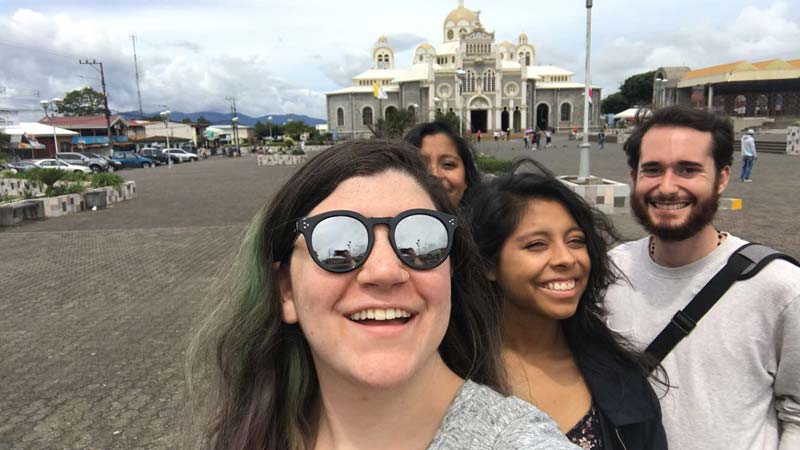What is Border Hopping When Teaching English Abroad?
Discover the methods English teachers in certain countries employ to maintain the validity of their visas, as they frequently venture across borders into neighboring countries.
Written By: Lauren Davis | Updated: June 29, 2023
Written By: Lauren Davis
Updated: June 29, 2023

Visas for teaching English abroad can be extremely confusing. There are numerous different types of visas English teachers use when moving abroad to teach, especially when looking to stay abroad long-term.
One of those most common questions pertaining to visas is, what type do I need? It can be an overwhelming topic, especially since every country and employer operates differently. Many International TEFL Academy (ITA) alumni are teaching on work visas, student visas, or cultural exchange visas.
But in parts of the world where paperwork isn’t a strong suit, most commonly in Latin America, tourist visas are the norm. Therefore teachers border hop so they can stay for an extended period of time. The standard visa procedure in these regions is teaching on a tourist visa while “border hopping,” which basically means that you are crossing over a border to another country to get a new visa. Because the term is vague at best, let's break down the who, what, when where and hows of border hopping when teaching English abroad.

What is Border Hopping?
In countries where border hopping is common practice, all you need is a valid U.S. passport (or the passport of your citizenship). Once in the country, you’ll be issued a stamp, or tourist visa, typically good for 90 days. Before those 90 days expire, you'll 'border hop,' meaning take a train, plane, or automobile, to a neighboring country to “renew” your tourist visa when you re-enter.
For example, if you're teaching English in Buenos Aires, Argentina, many teachers will cross the border into Uruguay for a weekend excursion, or even just for lunch, then head back home to Argentina with a fresh 90 days on his/her tourist visa.
While it may seem to be a bit of an inconvenience, many view this as an opportunity to travel and explore nearby countries!

Who Border Hops?
Your employer abroad will be able to tell you what type of visa teachers at the school are working on. For more information, view the Country Comparison Chart to see where teaching English on a tourist visa is the primary visa practice.
Teachers aren’t the only people who border hop in regions like Latin America and parts of Europe. In fact, it’s a common practice for many expats. From retirees to language learners, border hopping is a completely common and widely accepted practice.
Read more from ITA alumni:
- Border Hopping from Chile to Mendoza, Argentina
- Border Hopping While Teaching English in Argentina Can Be Fun
When Do I Need to Plan Border Hops?
Most tourist visas expire after 90 days in the country, so make sure you know when your tourist visa will expire. From there plan your trip before the day of expiration, and then you’ll be sailing smoothly for another 3 months of teaching.
Depending on your contract length and how long you plan to stay abroad, you may border many times, so pull out that map and plan some trips!
Watch ITA alumni Steve & Jessie Teach English online while country-hopping through Asia:
Where Should I Go During My Border Hop?
Latin America is the most common spot for border hopping, by far. From Argentina to Nicaragua, border hopping is extremely prevalent and common for English teachers and expats.
Teachers in Nicaragua or Costa Rica typically just bus into one or the other for border runs. This is very a very realistic, affordable way to renew this 90-day tourist visa and also have a nice weekend getaway.

Depending on where you plan to go it may be as simple as a 3-hour bus ride. Alternatively, you may need to plan accordingly (both financially and to take time) to take a long-distance flight for the weekend or a full week.
It’s important to note that there are countries where border hopping is not considered common practice. Make sure to talk to your ITA Admissions Advisor and check out the country comparison to chart to see what your visa process will be.
Moral of the story? Do your homework, make a plan, have fun, and don’t see border hopping as a setback. Border hopping is going to become your new favorite excuse to explore a new country and likely result in some of your favorite travel stories!
Posted In: Teach English in Latin America, Teach English Abroad Visas, Teach English Abroad Visas Must Read
Lauren Davis
A native of a one-stoplight town in Louisiana, Lauren packed a bag after graduating from college and traveled extensively throughout Asia before moving to South America to teach English in Argentina. There, she taught primarily business professionals and took advantage of her free time to explore Latin America.
Want to Learn More About Teaching English Abroad & Online?
Request a free brochure or call 773-634-9900 to speak with an expert advisor about all aspects of TEFL certification and teaching English abroad or online, including the hiring process, salaries, visas, TEFL class options, job placement assistance and more.







